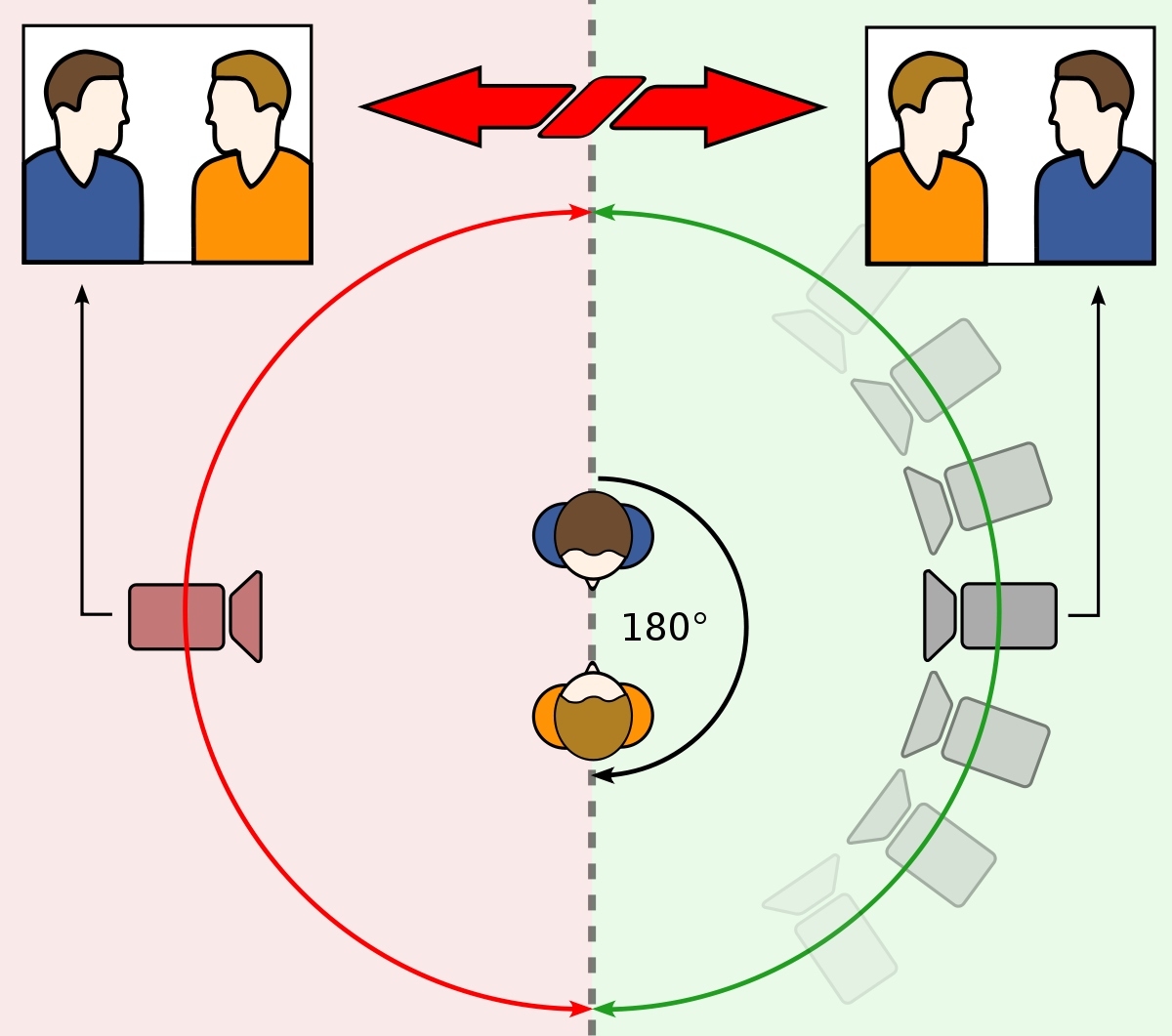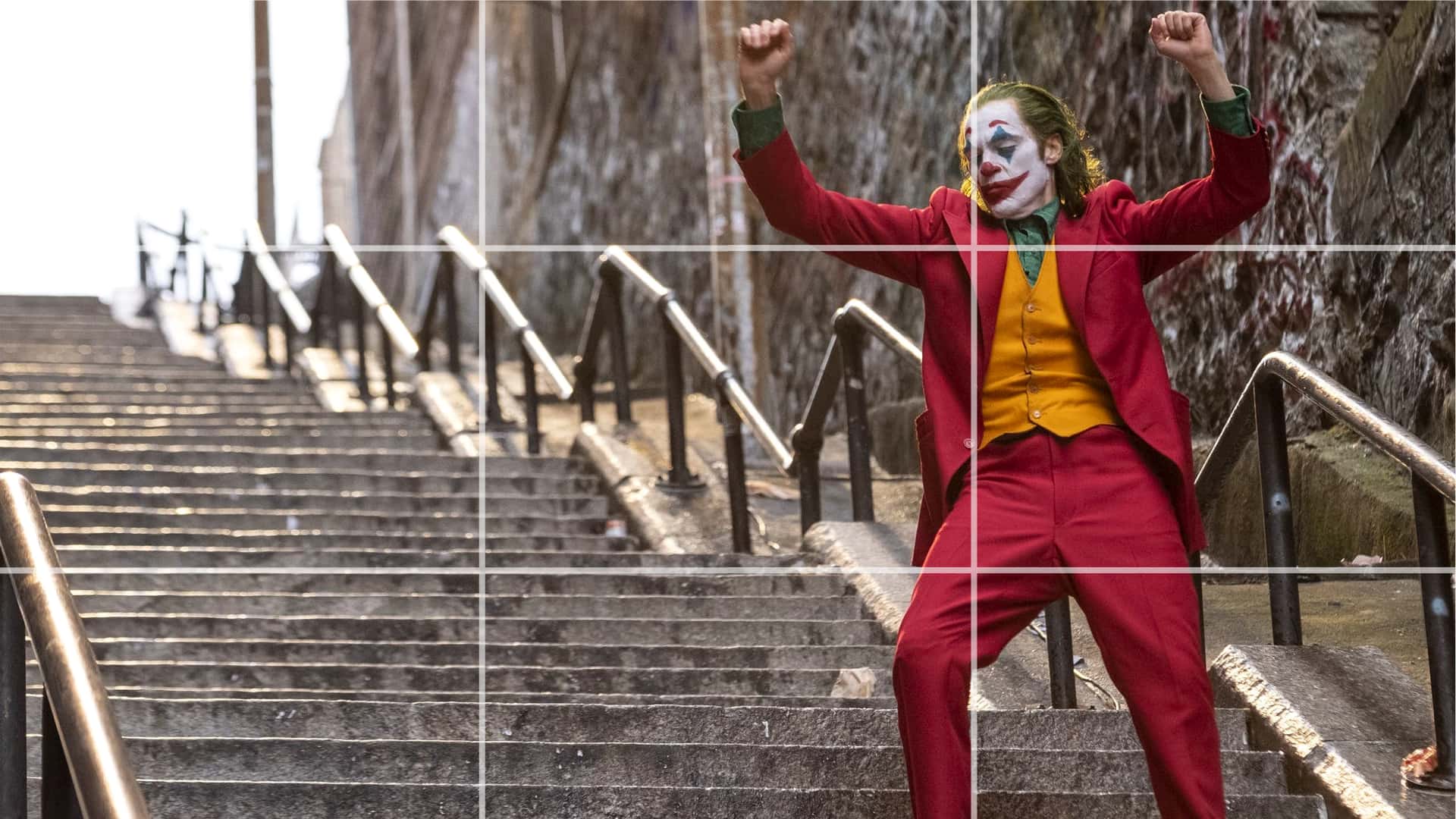On Tuesday 18th January my class and I had our second camera workshop. We learned the 180-degree rule which is probably one of the most important rules in filmmaking, it consists of an imaginary line that stretches between two actors and states that the camera cant cross this point, this helps with consistency within the movie and prevents confusion to the audience; the camera can go anywhere within the 180 degrees, although it can't cross the imaginary line. Moreover, rules of thrids are important and work alongside the 180-degree rule;
the rule of thirds is the positioning within the frame, the frame of the camera is divided into 9 boxes, and where you position the object you're filming is extremely important. By not only using the middle quadrants this creates further meaning to the scene as the audience or able to see beyond just the action.
When filming, often you shoot wide shots first even though in editing they may be used last or not at all. This is because often wide shots can be used as fillers and every detail involved in the scene is shown, therefore starting with a wide shot and shooting the extreme close-up last, this sets the scene and shows the action necessary to fulfill the scene.
Continuity is what makes the scene flow and believable as an actual real-life event, continuity is the small details that continue over several shots, for example, if in the wide shot the actor raises his right hand but in a close up he raises his left arm, when edited together, the scene won't flow nor make sense to the audience. Marks work alongside continuity, as they tell the actor where to position themself, often on shoots tape marks out a place for each specific actor to stand, although today - we used the lens cap to reinforce the continuity when taking several shots.
 "Stand by", "standing by!", "roll camera", "camera rolling", "action", and "cut!" are all expressions used on set. "Stand by" and "standing by" coinciding with each other to help the director check that everyone is ready for the camera to roll and for there to be silence within the studio, "stand by" is another phrase for "is everyone alright/ready" although it prevents misjudgment as the question isn't open and the only correct reply is "standing by". "roll camera" is targeted at the camera operator from the director in order to check that the camera works and that if there is a problem it can be solved before the scene takes place, moreover, by the camera operator replying "camera rolling" this means that there is little error for mistakes such as forgetting to press record as the reiteration of orders act as reminders and prevent mistakes. Finally, "action" states the beginning of the scene whereby the 'action' begins and "cut" signifies the end of the scene whereby the camera can be stopped. Although its important that the camera doesn't stop rolling until directed to by "cut" as footage taken may be more necessary than thought when it comes to editing later on.
"Stand by", "standing by!", "roll camera", "camera rolling", "action", and "cut!" are all expressions used on set. "Stand by" and "standing by" coinciding with each other to help the director check that everyone is ready for the camera to roll and for there to be silence within the studio, "stand by" is another phrase for "is everyone alright/ready" although it prevents misjudgment as the question isn't open and the only correct reply is "standing by". "roll camera" is targeted at the camera operator from the director in order to check that the camera works and that if there is a problem it can be solved before the scene takes place, moreover, by the camera operator replying "camera rolling" this means that there is little error for mistakes such as forgetting to press record as the reiteration of orders act as reminders and prevent mistakes. Finally, "action" states the beginning of the scene whereby the 'action' begins and "cut" signifies the end of the scene whereby the camera can be stopped. Although its important that the camera doesn't stop rolling until directed to by "cut" as footage taken may be more necessary than thought when it comes to editing later on.
Finally, it is important to not watch the footage back on set as not only is it expensive to rent out studios and locations and not only is it a waste of money, its a waste of time that you could be spending on filming additional clips. Also, often when actors see themselves back on set they critique themselves, which often results in a change in their mindset as they care more about what they look like instead of what they're doing.





No comments:
Post a Comment